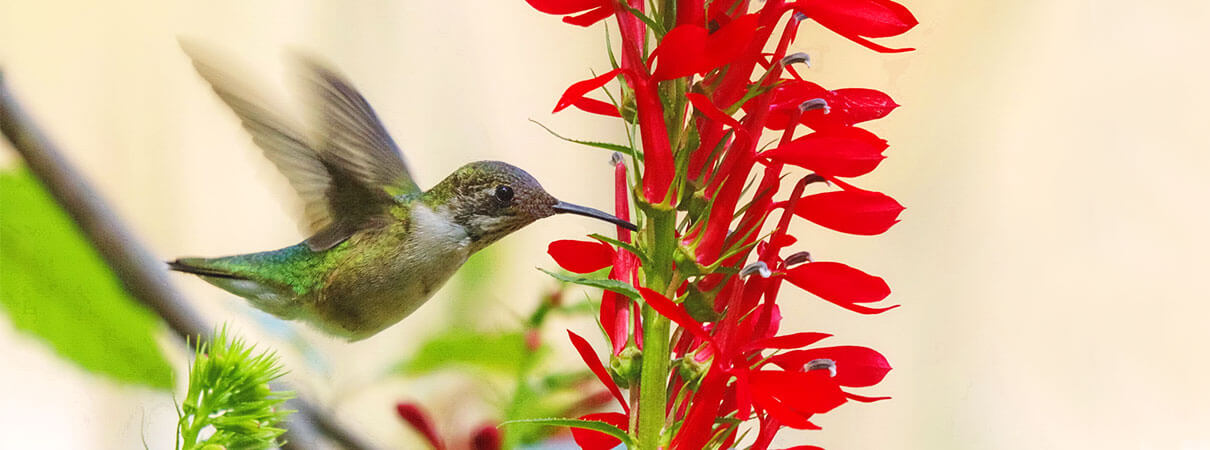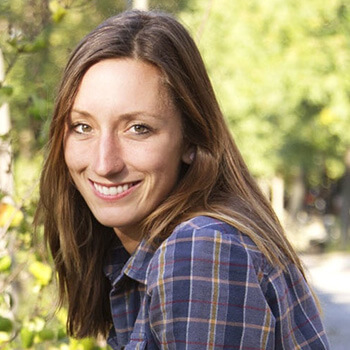Native Birds and Plants: More than Footnotes in the Landscape
In the northeastern United States, where I farm and write, our native oak trees support 534 species of moths and butterflies. Hundreds more rely on Black Cherry, willow, birch, and poplar trees. Of our flowers, Asclepias (milkweed) supports the charismatic Monarch butterfly; Monarda, Lobelia, and Phlox are beloved by many species of bee. Native plants anchor broadly functional, biologically diverse, and sensual landscapes.
If you love birds, learn to recognize and use native plants. This starts at home. For centuries, gardeners favored exotic ornamentals. But as the biological wealth of the North American landscape buckles under the pressure of invasive plants (and their accompanying insects and pathogens), it is more important than ever to grow a local landscape. Homeowners across the United States raise 40 million acres of lawn. Imagine that grass transformed into bird-friendly ecosystems, instead.
“Take into account the habitat you live in, and make a garden utilizing plants found in that area,” says Louise Zemaitis, an artist and naturalist living in Cape May, NJ. In 2000, she and her husband Michael O'Brien, both expert birders and guides for Victor Emanuel Nature Tours, planted their half-acre yard as a meadow and additionally installed five neatly organized beds of butterfly- and hummingbird-friendly plants. To date, their “yard list” includes an astonishing 282 bird species.

Ruby-throated Hummingbird. Photo by David Byron Keener/Shutterstock
Ask Zemaitis her secret for attracting birds and she begins by talking about “bugs.” With the knowledge that 95 percent of North American passerines, or songbirds, feed on insects, Zemaitis plants for caterpillars, knowing the birds will follow.
The property charms people as well. “Last week, I spotted a new neighbor taking photographs of my front yard,” Zemaitis says. “He wants a garden just like it.”
When I first learned to recognize the birds in the landscapes I loved, it was a kind of satori — a sudden enlightenment — that rang as clear as a bell. I've chased its echo ever since.
Unfortunately, truly native landscapes are increasingly hard to find. Over the winter, I went birding with a friend near his home in California, in an area I knew well from my work in agriculture. As we explored foothills filled with solar panels, vineyards, and olive groves, I felt my chest tighten with an unfamiliar anxiety. It was my first visit to these familiar places with birds' needs in mind. The human signature was evident everywhere, and its scrawl pushed birds to a footnote in the story of agriculture and development.
Yet in the areas where the right resources remained, an Acorn Woodpecker sought acorns in a small stand of California Scrub Oak. Below a giant rock cliff too sheer to farm, a Rock Wren appeared. A Greater Roadrunner ran alongside the road, through old cattle pasture reclaimed by California Sagebrush.
Following up on reports of an out-of-range Cassin's Kingbird, we continued slowly. I had never seen one, but recognized it straightaway. There, not five feet away, balanced on barbed wire, was our bird. My friend and I high-fived. In a sliver of appropriate habitat in an otherwise largely altered landscape, it was doing exactly what we expected: perching in the open, waiting for what came next.
 | Annie Novak is Manager of the Edible Academy at the New York Botanical Garden, an ABC Board member, and author of The Rooftop Growing Guide. |


















































